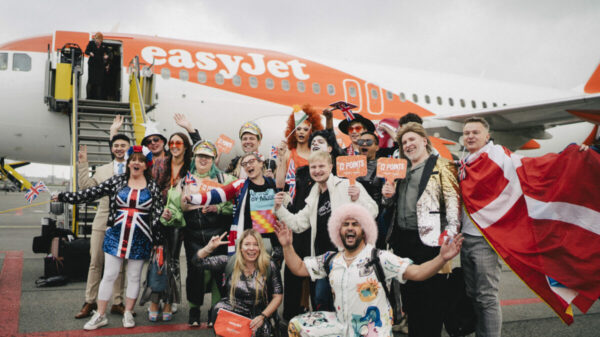The high street was once the heart of the retail industry, making it easy for advertisers to know where to place their ads for maximum effectiveness.
But with the rise of ecommerce and a cost of living crisis causing consumers to be extra cautious about their spending, high street footfall has dropped by more than 15% compared to pre-pandemic levels. Add to this unseasonal weather, train strikes and the growing popularity of hybrid work models, and it’s no surprise that brands and retailers are reconsidering how they should adapt their ads to consumer behaviour.
Yahoo’s head of agency strategy development Carina Moran believes that there is still hope for the high street, as she explains how digital out-of-home (DOOH) strategy needs to keep up with the ever-changing situation.
“The high street has long been considered the heart of the retail industry. City centres have been shoppers’ go-to-destination when looking for the latest trends and products. But the rise of ecommerce – coupled with changing working conditions – means they have struggled to maintain a foothold in the retail landscape.
As many more digital ad locations become available and traditional OOH ad platforms are updated with new screens in and around local retail locations, including screens within bars and restaurants not just in city centres, traditional routes to reach consumers for OOH advertising like commuter audiences are being disrupted.
Advertisers can now adapt their DOOH campaigns easily with programmatic buying to reach those audiences across many more locations and withCarina Mo differentiating and changing factors like time of day, weather and more to adapt creative content to maximise its effect.
A recent study has shown that when people view DOOH campaigns they are more likely to be drawn to those brands online. This proves that using the same content across out-of-home and social media increases brand awareness among consumers which, as a result, engages consumers online. DOOH is truly an important piece of the puzzle when it comes to advertising.
Subscribe to Marketing Beat for free
Sign up here to get the latest marketing news sent straight to your inbox each morning
Peak and off peak
Increased adoption of four-day work weeks is a significant factor in this move away from the big-city high street. While research shows that the majority of staff only venture into the office between Tuesday and Thursday, DOOH campaigns need to adapt to new commuter trends and reflect the new peak and off-peak footfall.
Consumers’ love for convenience shows no signs of abating – and seamless ecommerce sites are catering to this expectation. But while shopping from home has become a staple for many, commuters and high street shoppers do remain a valuable audience to tap into.
Traditionally, OOH ad campaigns – posters, big billboards and the like – have been used for general brand building and awareness, targeting specific demographics and locale through location-based advertising. But with the ability to adapt creative and provide interactive experiences, DOOH now provides a great platform to drive instant outcomes for retailers engaging casual shoppers, commuters or those out to lunch on their local high streets from home or the office.
When it rains…
Different working conditions aren’t the only contributing factor to declining high street footfall. The cost-of-living crisis and rising inflation rates have prompted consumers to tighten their purse strings.
Yet, the IPA Bellwether Report demonstrates that advertising spend is growing despite these rising costs, with AA/WARC results showing that DOOH ad spend increased by more than 13%. This is a testament to the power of advertising in the retail sector. It also reinforces the need for brands to be smart about their ad spend and ensure campaigns reach the right audience and maintain brand awareness.
Ongoing train strikes and colder temperatures have also been preventing consumers from reaching the city centre. And this has seen footfall in more regional towns and suburbs enjoy a resurgence. The same can be said for retail parks, which can be easily accessed by car.
Retail parks are ideal locations for audiences wanting to buy rather than browse – the intent to buy is high. Future DOOH efforts should learn from these new shopping trends. Targeting areas with high footfall at the right time is key to minimising losses and improving budgetary efficiency.
Out with the old, in with the new
As ad spend continues to grow, brands can identify more effective ways to connect with audiences – the first step to transforming audiences into participants.
Six in 10 people in the UK are encouraged to search when an OOH advertising campaign features a location callout, says research. The more time consumers see OOH, the more often they search across different categories – the most common search was to find nearby store addresses.
Most notably OOH searches were more likely to occur on Monday to Thursday when commuters are more prevalent, with 80% of OOH searches occurring during the morning commute.
Augmented reality bus shelters help fill the boredom waiting for buses as commuters interact with virtual ads displaying additional information on their phones. And fun, game-based installations are popping up in high footfall areas to encourage participation with hard-to-turn-down challenges.
QR codes facilitate interactive experiences between ads and audiences, while also allowing advertisers to measure campaign effectiveness and impact.
Adding the digital aspect to OOH campaigns in this way enables a more programmatic-led approach, with data-led analytics and technology key to driving targeted efficient campaigns and enhancing interactivity that can also be linked to in-store metrics with footfall studies. It provides advertisers with a licence to get creative and refine campaigns through measurable results.
Premium position
Timing, content, position and proposition are all important factors to consider in delivering programmatic DOOH campaigns, as creating touch points across both the commuter and advertising journey is key.
Yahoo’s partnership with DAX provides customers with over 2,400 premium digital screens, including ultra-HD formats of screens on train services for London’s Elizabeth line, allowing brands to target the commuter audience with measurable campaigns.
If retailers and brands want to continue with growth, adapting to the changing footfall in the high street and suburbs is essential. DOOH strategies aren’t the same as they were three years ago. Ongoing economic uncertainty and hybrid working conditions means that high street footfall in city centres has fallen – and this trend is unlikely to reverse anytime soon.
Flexible campaigns are vital to adjust to the new peak shopping times. By making the most of the plethora of tools available to understand evolving consumer habits, brands can drive more efficient and high value DOOH campaigns, reaching their target audiences in the right place and at the right time.









